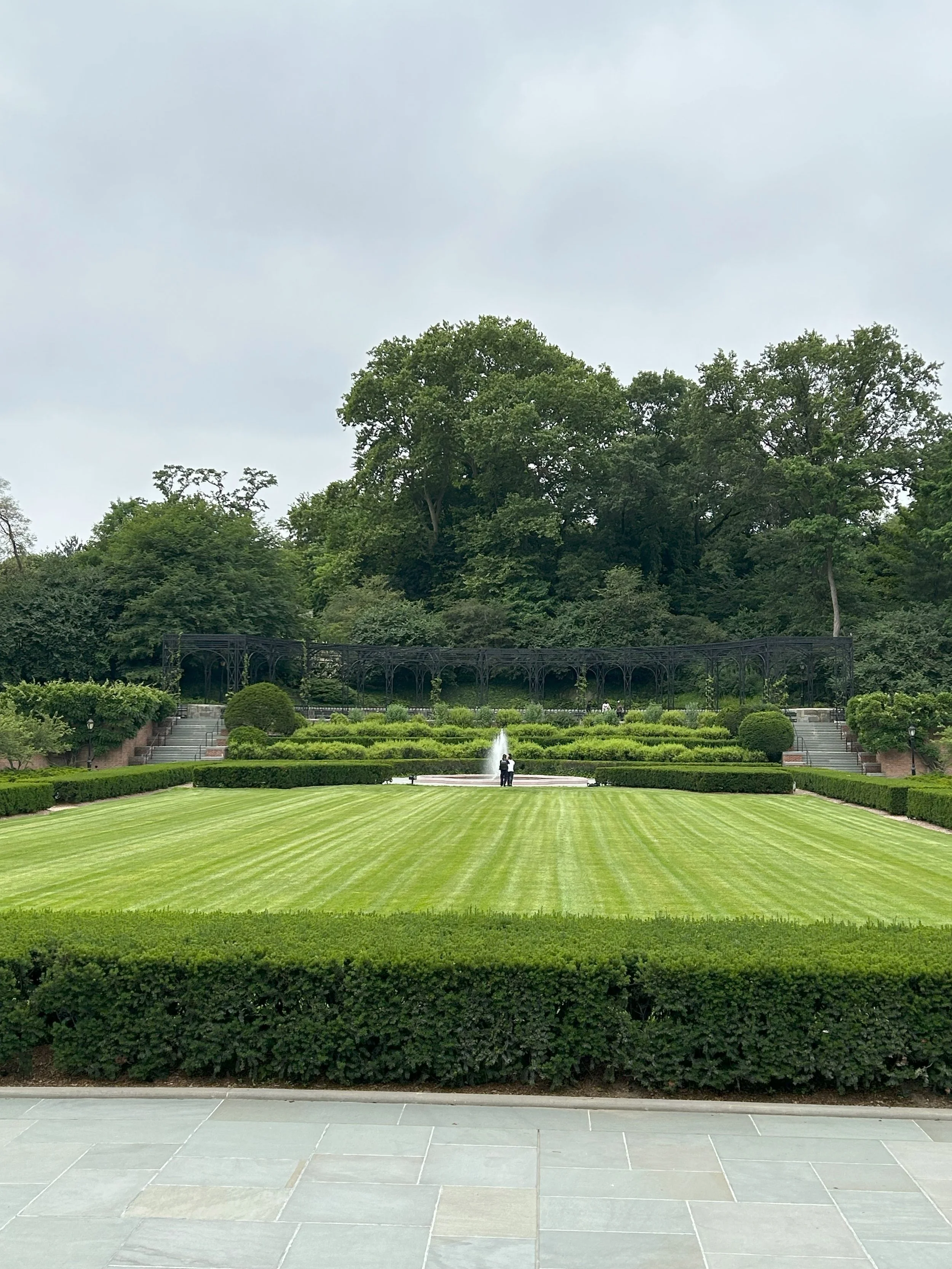Duke Ellington Statue
We alight from the subway at 110th Street & Eighth Avenue to walk across Central Park along its northern border, past the picturesque Harlem Meer, an artificial lake built on a former tidal marsh, on our way to the northeast corner of the park and the Duke Ellington Statue, conceived by pianist Bobby Short and completed in 1997. The statue sits atop 10-foot pillars and features the great musician beside a grand piano. It’s an unusual work and worth a look.
Central Park’s Conservatory Garden
Then we head south through the park, this time along its Fifth Avenue border, until reaching the recently completed Conservatory Garden at 103rd Street, a six-acre tract featuring Italian, French and English formal gardens side-by-side. Though we prefer the intimate English garden, the photography-friendly Italian garden serves as the centerpiece of this gorgeous addition to Central Park, which continues to get better and better.
Albertine Books
We next catch a cab down Fifth Avenue, hopping off at 79th Street where the Stanford White-designed Payne Whitney mansion now houses the cultural services of the Embassy of France and, more importantly for our purposes, Albertine Books, a small bookstore of mostly French titles. We speak limited French, so browsing isn’t our purpose here. Rather, climbing a narrow staircase to its second floor delivers us to an intimate reading room, complete with charming ceiling mural and chandelier rope hanging through a hole to illuminate the floor below. Albertine Books is a unique New York spot.
The Frick Collection
Our main stop of the day is eight blocks farther south on Fifth Avenue— the refurbished Frick Collection that reopened in April to well-deserved praise. Even if you don’t particularly care for a world-class collection of Old Masters’ paintings, the interior pleases from beginning to end. Where to start? The Garden Court and West Gallery are most dramatic, but each room tells a story, and the paintings represent a who’s who of famous artists pre-1800, including Vermeer, Rembrandt, and van Dyke. We highly recommend a visit to this restored treasure.
Au Za’atar
Dinnertime has arrived, and we are ready for it. Au Za’atar serves Lebanese cuisine from two Manhattan locations — the Lower East Side and Midtown East, the latter of which we patronize because it is closer to the Frick. As usual with Middle Eastern food, small plates abound along with a nice balance of vegetarian and meat dishes. The décor is superb, and we sip on Lebanese wine and arak (The Milk of Lions), a milky spirit that tastes of anisette, licorice and peppermint, while dining on lamb shank and vegetable kebab.






